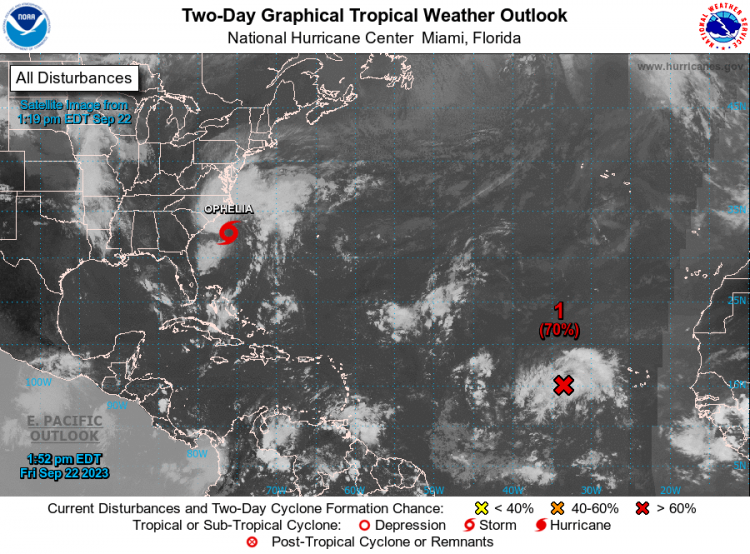Tropical Storm Ophelia, which formed off the Southeast U.S. coast, is set to unleash a combination of heavy rain, strong winds, high surf, and coastal flooding up the Eastern Seaboard as it moves into the weekend. The storm, which became the 16th of the 2023 Atlantic hurricane season, is currently centered 185 miles south of Cape Hatteras, North Carolina, and is advancing north-northwest at a speed of 10 to 15 mph.
According to meteorologists, the storm's impacts will be felt well ahead of the storm's center, with rainfall and gusty winds already making their presence known in eastern North Carolina and southeast Virginia. The center of Ophelia is predicted to move into eastern North Carolina by Saturday morning. Even as the storm weakens upon moving inland, it is expected to continue causing significant disruptions throughout much of the day.
The National Hurricane Center (NHC) has issued a tropical storm warning for eastern parts of North Carolina and Virginia extending to southern Maryland. This includes regions such as Chesapeake Bay, Albemarle Sound, and Pamlico Sound, indicating that tropical storm force winds of 39 mph or higher are anticipated to spread northward from North Carolina through Saturday.
Tropical Storm #Ophelia latest satellite + radar, and forecast: pic.twitter.com/OVapiRMJlO — Zoom Earth (@zoom_earth) September 22, 2023
Furthermore, a storm surge warning has been declared from Beaufort Inlet, North Carolina, to Chincoteague, Virginia. This encompasses southern Chesapeake Bay, Albemarle and Pamlico Sounds, and the Neuse and Pamlico Rivers, signaling that life-threatening storm surge flooding is imminent within the next 36 hours.
The storm surge, propelled by onshore winds, is expected to cause flooding in parts of the Carolinas and the mid-Atlantic. Coastal areas, particularly those experiencing high tides, are at risk. Areas from Delaware to New Jersey are likely to witness the peak of coastal flooding during Saturday afternoon's high tide. In Chesapeake Bay and the Virginia Tidewater, flooding could occur during three high tides, with the most severe expected in the early hours of Saturday morning.
Additionally, the storm is predicted to bring heavy rainfall, leading to potential flash flooding, especially in areas already grappling with coastal flooding. The risk of flooding is further exacerbated by the possibility of heavy rain bands stalling over certain regions for extended periods.
Residents and authorities are urged to remain vigilant and take necessary precautions. Virginia Governor Glenn Youngkin has already declared a state of emergency to facilitate response and recovery efforts. As the storm progresses, communities along the East Coast are advised to stay updated with the latest forecasts and heed local advisories and warnings.






